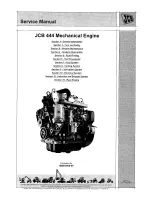
10. BI-DIRECTIONAL COMMUNICATION, SIGNAL REPEATER FUNCTION
Tubular motors with a built-in radio system also have the following functionality:
BI-DIRECTIONAL COMMUNICATION
- allows the exchange of information between the tubular
motor and the remote control. Depending on the model of the radio controller, the user may obtain
more or less extensive messages (location of the shutter, encounter of obstacles, etc.). Bi-directional
communication is enabled at the factory and does not require any action on the part of the user.
SIGNAL REPEATER
- this function makes it possible to extend the range of radio control. The
tubular motor with the repeater function enabled receives signals from the controller or tubular
motor and transmits them further by amplifying it. Thanks to this, the farthest located receivers,
not being in the range of the controller, can receive and transmit information via indirectly actuated
tubular motors. Enabling the function:
1. Enter the tubular motor in the PROGRAMMING MODE.
2. On the remote control, press the sequence of buttons: UP, STOP, DOWN, UP, STOP, DOWN.
Activation of the repeater function will result in three sequences of micro movements by the
tubular motor. Deactivation of the repeater function will result in 2 micro movements by the
tubular motor.
WARNING!
The signal repeater function should be turned on only in devices that are on the
limit of signal range. Due to the effective work, we recommend turning on the signal repeater
function in up to three devices in the facility. Unjustified activation of the signal repeater
function in many devices may cause interference in all radio devices.
11. SETTING OF THE LIMIT SWITCHES
In order to set the appropriate operating range of the tubular motor, one must set the limit switches.
This is done with the limit switch knobs located on the tubular motor head (Fig. 15.2).
The direction of rotation of a given knob is indicated by an arrow next to the knob.
Turning the knob towards „+” increases the number of turns in a given direction of tubular motor
movement, while turning towards „-” reduces.
Fig. 15.2
12. LOWER POSITION SETTINGS
Lower the shutter towards the lower position. Then turn the knob corresponding to the direction of
rotation of the tubular motor when lowering towards „+” until the desired lower shutter position is
obtained. The revolutions can be corrected by turning the knob towards „-”.
13. UPPER POSITION SETTINGS
Raise the shutter near the top position. Then turn the knob corresponding to the direction of
rotation of the tubular motor when lifting, towards „+” until the desired position of the upper
shutter is obtained. The revolutions can be corrected by turning the knob towards „-”.
Wersja 2.6, 2021-01-21
4
























